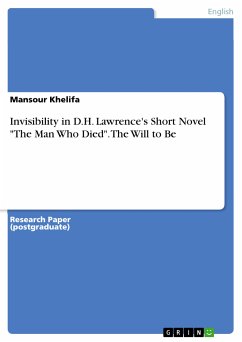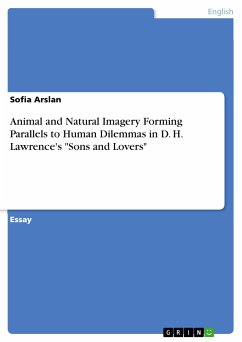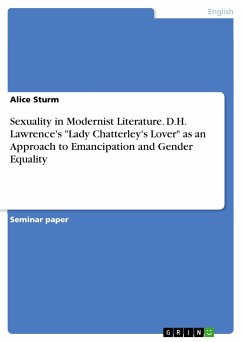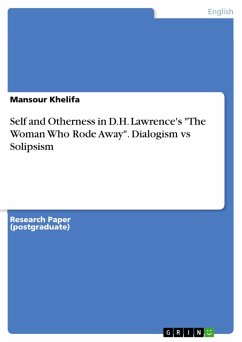Research Paper (postgraduate) from the year 2007 in the subject English Language and Literature Studies - Literature, , language: English, abstract: Starting from the apocalyptic modernist assumption that "[h]umanity is a dead letter" ("Women in Love" 60) Lawrence launches, especially after the Great War, his bitterest attacks on bourgeois society. He accuses Western civilisation of causing the impoverishment of what he calls the sensuous vitality of the "lower self" ("Fantasia of the Unconscious and Psychoanalysis and the Unconscious" 178), of turning human beings into spineless abstractions, and of transforming man into a consuming machine. Lawrence cannot expect from modern society anything other than post-mortem effects. He however believes that the novel, "the one bright book of life ," as he calls it, may eventually reinvigorate this moribund society. In order to address the notion of invisibility in relation to Lawrence's apocalyptic / vitalistic vision, I have chosen one of his most eloquent and perplexing works, i.e. "The Man Who Died" which deals with the representation of the world's invisibility and mindlessness. This short novel is one of his lesser works, the title of which refers to the main character who has risen from the dead as a parodic, Christ-like figure. In this paper, I will analyse the various ways in which Lawrence endeavours to make the invisible vitality of the living world - what he calls "the phenomenal world" (143) - visible and palpable, and even more real than reality itself.
Dieser Download kann aus rechtlichen Gründen nur mit Rechnungsadresse in A, B, BG, CY, CZ, D, DK, EW, E, FIN, F, GR, HR, H, IRL, I, LT, L, LR, M, NL, PL, P, R, S, SLO, SK ausgeliefert werden.









